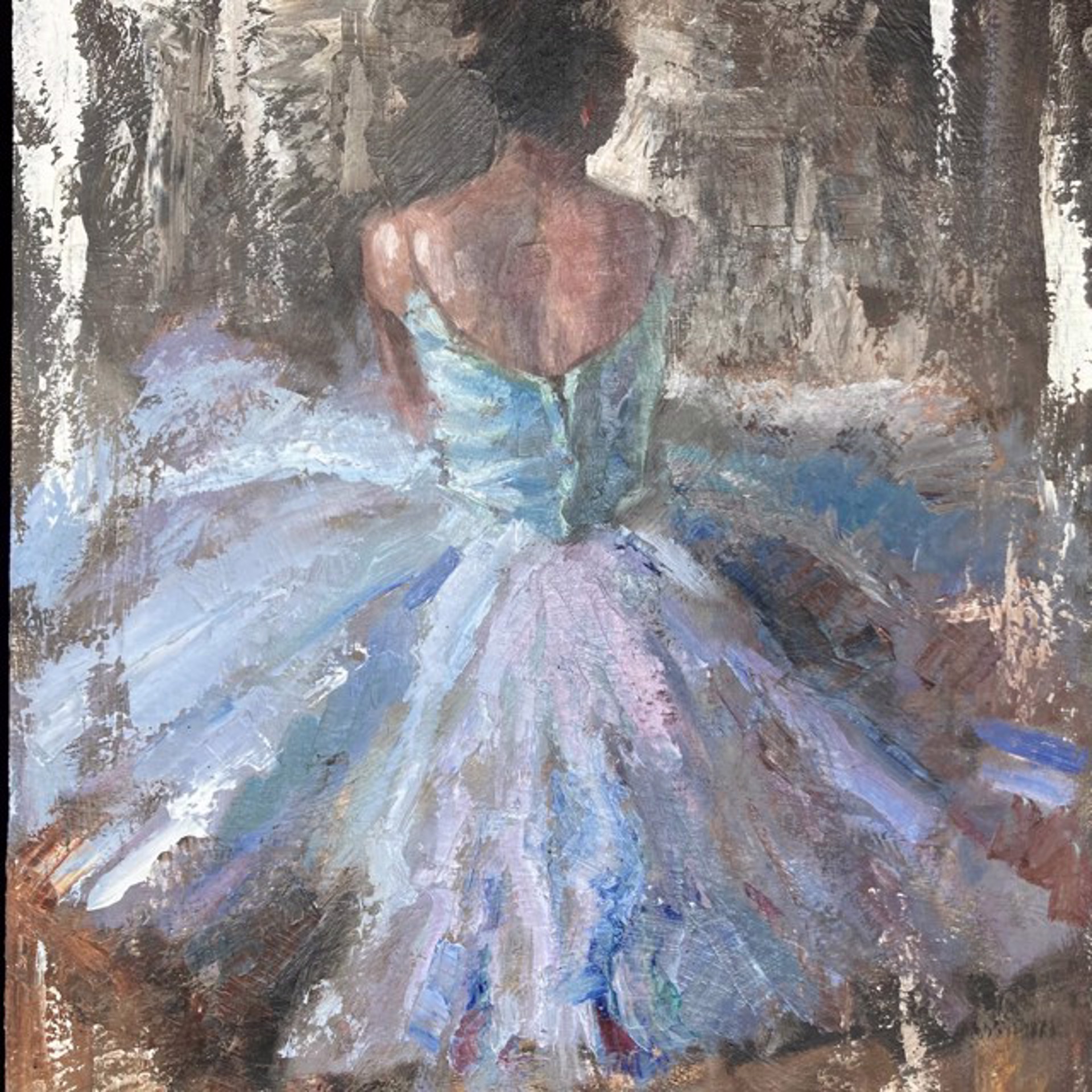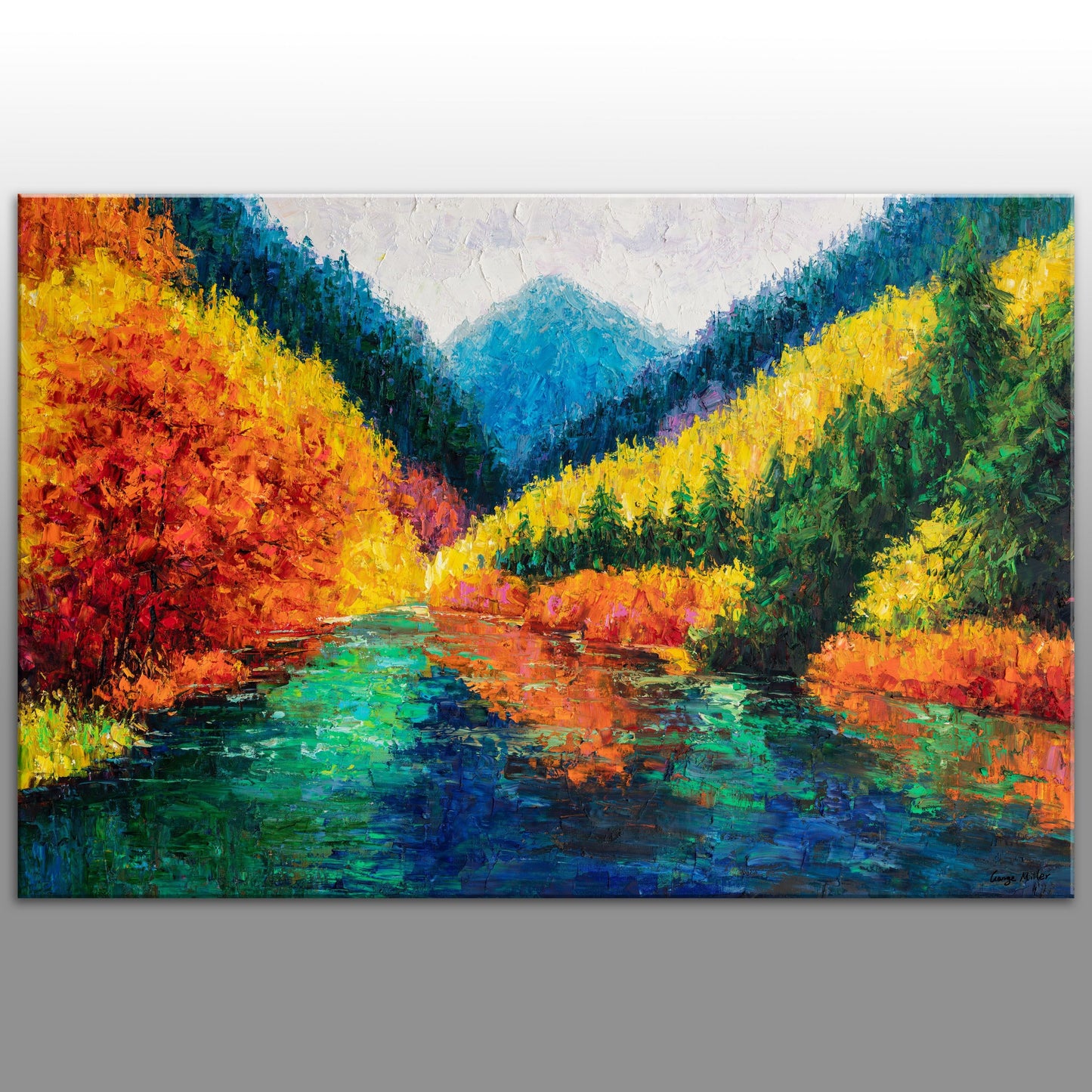Exploring Everything About Oil Paints: An Overview to Comprehending Their Charm and Value
Oil paints have actually captivated target markets for centuries, offering a peek into the imaginative mastery of numerous eras. Their rich background is linked with ingenious techniques and profound psychological expression. Understanding the materials and methods behind these art work can improve admiration. Furthermore, the market for oil paints presents chances for investors and enthusiasts alike. As one discovers this interesting globe, the concern occurs: what makes an oil painting truly beneficial?
The History of Oil Painting: A Journey Through Time
Oil paint has roots that date back to old times, it really prospered during the Renaissance, when artists uncovered its flexibility and rich shade potential. Early instances can be traced to the 7th century, with methods progressing especially across societies. The tool ended up being noticeable in Northern Europe in the 15th century, especially via the works of musicians like Jan van Eyck, who spearheaded its usage for comprehensive realistic look and dynamic colors. This period marked a separation from tempera paints, allowing for higher deepness and structure. As oil paint spread, it influenced countless artists, bring about masterpieces by popular numbers such as Leonardo da Vinci and Rembrandt. The tool's heritage proceeds, shaping the art world well into modern-day times.
Recognizing Oil Paints: Materials and Techniques
As artists check out the globe of oil paints, they experience a diverse variety of products and strategies that define this medium. The main elements of oil paint consist of pigments, which give color, and drying out oils, such as linseed, that bind the pigments and promote application. Numerous additives can modify the paint's appearance and drying out time, enhancing flexibility. Methods like glazing, where clear layers are accumulated, and impasto, which involves applying thick paint, allow for various aesthetic results. Additionally, using brushes, palette blades, and also fingers can produce distinct appearances and finishes. Understanding these techniques and materials enables artists to totally share their creative thinking and attain the desired impact in their artwork.
The Function of Color in Oil Paints
Shade plays a crucial function in oil paints, influencing both visual charm and emotional vibration. Comprehending shade theory essentials, including the connections in between colors, can enhance an artist's ability to share state of mind and atmosphere. Additionally, understanding color blending methods enables higher deepness and richness in a paint's palette.

Shade Concept Basics
Understanding shade theory is important for musicians working with oil paints, as it develops the foundation for developing harmonious and aesthetically interesting structures. Shade theory encompasses the research study of how shades communicate, the shade wheel, and the connections in between primary, second, and tertiary shades. Artists make use of corresponding colors to boost contrasts and produce centerpieces, while comparable shades advertise unity and cohesiveness within an item. Additionally, the ideas of trendy and cozy shades influence the assumption of depth and space in a paint. Understanding these concepts enables musicians to control color successfully, directing the viewer's eye and connecting their intended message. Proficiency of color concept ultimately enhances a musician's capability to share emotions and concepts through their work.
Psychological Influence of Shade
The emotional effect of shade in oil paints plays a critical role in exactly how customers regard and connect with artwork. Colors evoke specific sensations and moods, influencing the audience's emotion. Cozy colors like oranges and reds can develop a feeling of heat and power, while awesome tones such as blues and eco-friendlies commonly stimulate peace or self-questioning. Artists tactically select color combinations to improve narrative aspects, directing the target market's psychological trip. The saturation and comparison of colors additionally enhance these impacts, drawing interest and producing emphasis. Ultimately, the interaction of shades in oil paints not just improves their aesthetic appeal yet additionally works as a powerful medium for psychological expression, improving the viewer's experience and interpretation.
Color Combining Techniques
While several elements of oil painting add to the total structure, grasping color blending techniques is vital for accomplishing desired results and depth. Shade blending can be approached via different methods, consisting of the subtractive and additive processes. Additive blending includes combining shades of light, while subtractive blending depends on pigments, where colors blend to develop brand-new shades. Artists frequently use a limited palette to develop unified works, understanding the relationships in between main, secondary, and tertiary shades. Methods such as glazing and scumbling even more enhance deepness and brightness. By skillfully blending shades, an artist can stimulate emotions, create centerpieces, and accomplish a sense of realistic look, eventually elevating the paint's visual and emotional influence.
Famous Oil Painters and Their Iconic Functions

Well known for their proficiency of shade and technique, oil painters have actually produced some of the most renowned art work in history. Distinguished musicians like Vincent van Gogh captivated audiences with his emotive brushwork in "Starry Evening," while Claude Monet's "Impression, Dawn" prepared for Impressionism. Leonardo da Vinci's "Mona Lisa" remains a long-lasting sign of imaginative wizard, showcasing his skill in capturing human expression. At the same time, Rembrandt's "The Night Watch" illustrates his ingenious use light and darkness. Other notable numbers include Pablo Picasso, that changed modern art with his bold experimentation in jobs like "Les Demoiselles d'Avignon," and Georgia O'Keeffe, whose vivid representations of landscapes and flowers aided specify American modernism. Each artist's distinct design added substantially to the oil paint landscape.
Just how to Evaluate the Quality of an Oil Paint
Reviewing the high quality of an oil painting entails a cautious assessment of workmanship methods, in addition to an evaluation of shade and composition. Observing brushwork, layering, and the application of paint can disclose the artist's skill degree. Furthermore, the interaction of colors and the general arrangement of components add significantly to the paint's visual value.
Assessing Workmanship Techniques
A meticulous evaluation of craftsmanship methods is essential for identifying the high quality of an oil painting. Critics should initially examine the application of paint; thick, textured brushstrokes might recommend an experienced hand, while excessively uniform applications could show a lack of depth. oil paintings for sale. The layering strategy is also crucial; the visibility of glazes and varied density can enhance brightness and intricacy. Additionally, the high quality of the products used, such as the canvas and pigments, plays a considerable duty in toughness and overall aesthetic. Interest to information in elements like sides and shifts in between colors shows the artist's commitment to their craft. Eventually, these techniques add to the painting's read more emotional influence and market price, acting as indications of the artist's skill and intent
Evaluating Shade and Make-up
While examining the high quality of an oil paint, one must concentrate on the interaction of shade and make-up, as these components are fundamental to the artwork's overall impact. Color choices can establish and evoke feelings state of mind; for that reason, the musician's palette ought to be examined for harmony and contrast. A healthy composition guides the visitor's eye and develops a feeling of unity. Musicians usually employ techniques like the rule of thirds or leading lines to enhance visual interest. Additionally, using light and darkness can include depth, enhancing the three-dimensionality of the painting. Eventually, an effective oil paint weds shade and structure, engaging the customer and welcoming a much deeper gratitude of the artist's vision and technique.
Caring for and Preserving Oil Paintings
Appropriate treatment and conservation of oil paintings is important for keeping their honesty and durability. To secure these artworks, it is vital to present them far from direct sunshine, which can create fading and discoloration. Keeping a stable environment with regulated temperature and moisture more aids in preventing damages. Cleaning up should be done delicately utilizing a soft, dry towel, preventing any rough chemicals that might harm the paint or varnish. Routine evaluations for indicators of degeneration, such as flaking or cracking, are suggested. When delivering or storing oil paintings, correct padding and framework are necessary to prevent physical harm. Eventually, diligent care adds to the visual charm and worth of oil paints gradually.
The Market for Oil Paints: Spending and gathering
Understanding the marketplace dynamics for oil paints is necessary for collection agencies and capitalists alike. The worth of these artworks is affected by different factors, consisting of the artist's online reputation, historical significance, and present trends. Collection agencies often look for pieces that reverberate personally while taking into consideration possible recognition in value. Auctions and galleries function as main venues for trading, with costs fluctuating based upon demand and rarity. Purchasing oil paintings calls for study right into the marketplace, along with an understanding of credibility and provenance. Additionally, emerging artists may offer chances for considerable returns, while established names can command high costs. Generally, a strategic approach to collecting can yield both visual satisfaction and economic incentives.

Often Asked Inquiries
What Are the Ecological Impacts of Oil Painting Materials?
The environmental effects of oil painting materials include the release of unstable natural substances (VOCs), harmful waste generation, and resource extraction for pigments. These elements contribute to contamination and environmental destruction, elevating problems among ecologically conscious artists and customers.
How Do Various Canvases Influence Oil Painting Results?
Various canvases influence oil painting results considerably. Surface, absorbency, and texture top quality can modify paint application, drying times, and color vibrancy. Artists often pick specific canvases to achieve wanted effects and improve their creative expression.
Can Oil Paintings Be Recovered if Harmed?
If damaged, Oil paints can without a doubt be recovered. Expert conservators make use of various techniques to fix rips, tidy surface areas, and address staining, making certain that the artwork retains its initial appeal and value for future generations.
What Are the Indicators of an Initial Oil Painting?
The indicators of an original oil paint include visible brush strokes, structure variations, and an uneven canvas weave (oil paintings for sale). Furthermore, authenticity might be verified via provenance, signatures, and the presence of a varnish layer special to oil mediums
Just How Has Innovation Influenced Modern Oil Painting Techniques?
Innovation has substantially influenced modern-day oil painting strategies by introducing electronic tools for preparation, enhanced materials for structure and longevity, and on the internet systems for sharing and offering art, consequently increasing artists' imaginative possibilities and audience get to. Oil painting has roots that date back to old times, it truly grew during the Renaissance, when artists found its versatility and rich shade possibility. The emotional effect of shade in oil paints plays a crucial role in exactly how audiences attach and perceive with artwork. While lots of facets of oil painting add to the total composition, grasping shade blending strategies is important for accomplishing wanted results and depth. Examining the top quality of an oil painting entails a cautious assessment of workmanship strategies, as well as an evaluation of color and make-up. While examining the quality of an oil painting, one should focus on the interaction of shade and make-up, as these components are essential to the artwork's general effect.